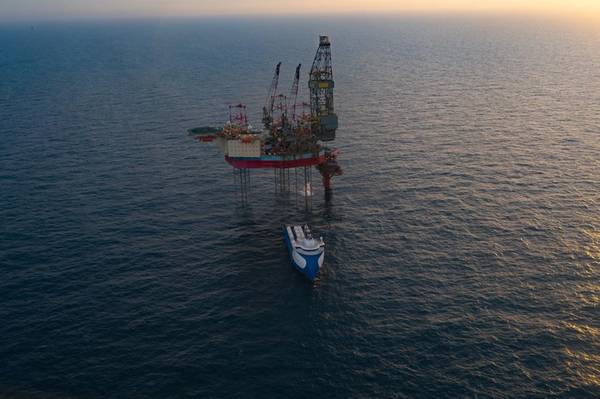
Denmark's Crown Prince Frederik inaugurated on Wednesday what has been described as "a world first" with the injection of carbon dioxide into a depleted oil field in the Danish North Sea as part of Project Greensand.
The CO2 was captured at an INEOS Oxide site in Belgium, transported to the Danish North Sea, and then stored in the INEOS-operated Nini field in the Danish North Sea.
The first carbon storage event to celebrate the achievement was held in Esbjerg, Denmark, today and hosted by INEOS and Wintershall Dea, lead partners in the Project Greensand consortium.
By 2030, Project Greensand aims to store up to 8 million tonnes of CO2 per year in this area while continuing to make significant contributions to our understanding and growth of carbon storage technology.
The European Commission estimates that the EU will need to store up to 300 million tonnes of CO2 per year by 2050 to meet its climate goals.
Ursula von der Leyen, President of the European Commission said, “This is a big moment for Europe’s green transition, and for our clean tech industry. The first ever full value chain, for carbon capture and storage in Europe. You are showing that it can be done. That we can grow our industry through innovation and competition, and at the same time, remove carbon emissions from the atmosphere, through ingenuity and cooperation. This is what Europe’s competitive sustainability is all about.”
Project Greensand is a consortium of 23 organizations with expertise in carbon capture and storage, including business, academia, government and start-ups. It is supported by the Danish state through the Energy Technology Development and Demonstration Program (EUDP). CCS is considered a key technology in reaching the Danish 2045 net zero target.
Lars Aagaard, Minister for Climate, Energy and Utilities said, “The Danish subsoil can store a lot more carbon than we ever will capture in Denmark. Therefore, I am extremely pleased that the whole perspective on the Danish subsoil from day one is based on an industrial thinking where these resources should be brought to the market and help other countries meet their climate target on a commercial basis.”
For this pilot project, the CO2 was transferred from Belgium aboard a platform supply vessel, transferred on the Noble Resolve jack-up rig, and then injected into the Nini field and stored at a depth of about 1,800 meters below the seabed.
The FID for a full-scale project is expected to be reached after proof of concept, in first half of 2024, and will have an estimated delivery duration of around 24 months after which carbon storage could be operational from around 2025.